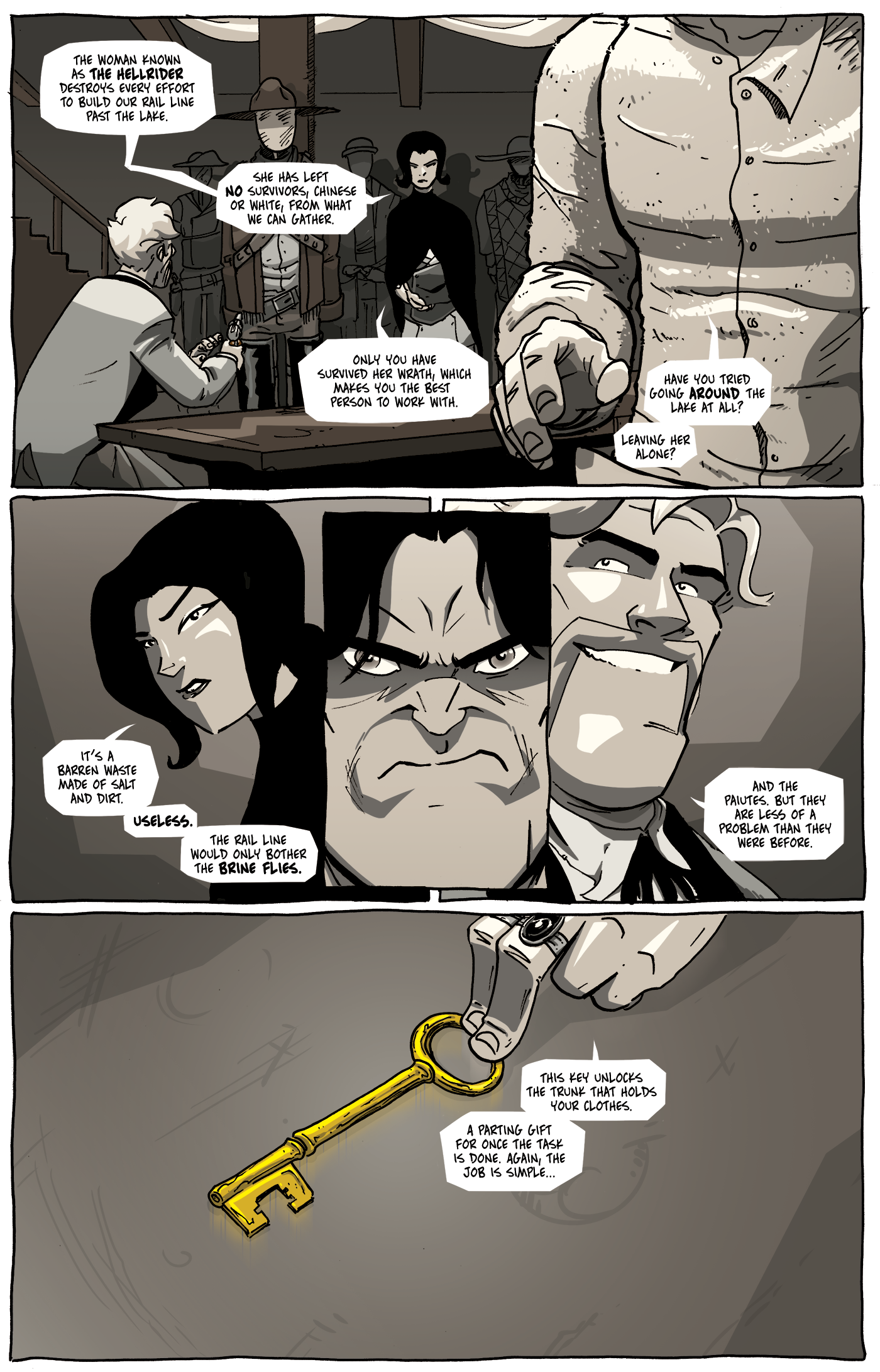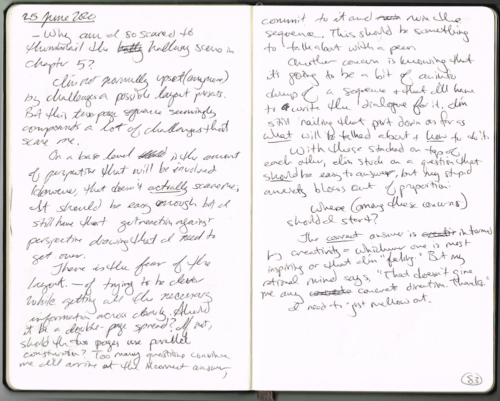I found a fun anecdote from my notes about the hallway scene––which bled into this scene, as well––that are all the way back from June 2020:
- Why am I so scared to thumbnail the hallway scene in Chapter 5?
I’m not normally upset (anymore) by challenges a possible layout presents. But this two-page sequence seemingly compounds a lot of challenges that scare me.
On a base level is the amount of perspective that will be involved. However, that doesn’t actually scare me; it should be easy enough, but I still have that gut reaction against perspective drawing that I need to get over.
There is the fear of the layout––of trying to be clever while getting all the necessary information across clearly. Should it be a double-page spread? If not, should the two pages use parallel construction? Too many questions convince me I’ll arrive at the incorrect answer, commit to it, and ruin the sequence. This is something to talk about with a peer. [NOTE: I never did, but I really should have.]
Another concern is knowing that it’s going to be a bit of an infodump of a sequence and that I’ll have to write the dialogue for it. I’m still nailing that part down as far s what will be talked about and how to do it.
With these stacked on top of each other, I’m stuck on a question that should be easy to answer, but my stupid anxiety blows out of proportion:
Where (among these concerns) should I start?
The correct answer is informed by creativity––whichever one is most inspiring or that I’m “feeling.” But my rational mind says, “That doesn’t give me any concrete direction. Thanks.”
I just need to mellow out.
This is a technique I use a lot in teaching, we call it “journaling” in class, but it’s a freewriting exercise developed by composition theorist and educator, Peter Elbow. Interestingly, it’s not a tool I used very often before being introduced to it as a graduate student. So, it’s one of the areas that I incorporated into my creative life from my academic life. It has become an incredible and reliable part of my creative process, which makes a lot of sense because it’s basically how I draw. I sketch first to find the subject and the composition. I get the ideas out because only then can I move forward. Though I didn’t get any specific answers from doing this, it laid everything out into easy pieces that I could attack on their own, leading to a much better and cohesive scene than I was initially imagining.




Discussion ¬